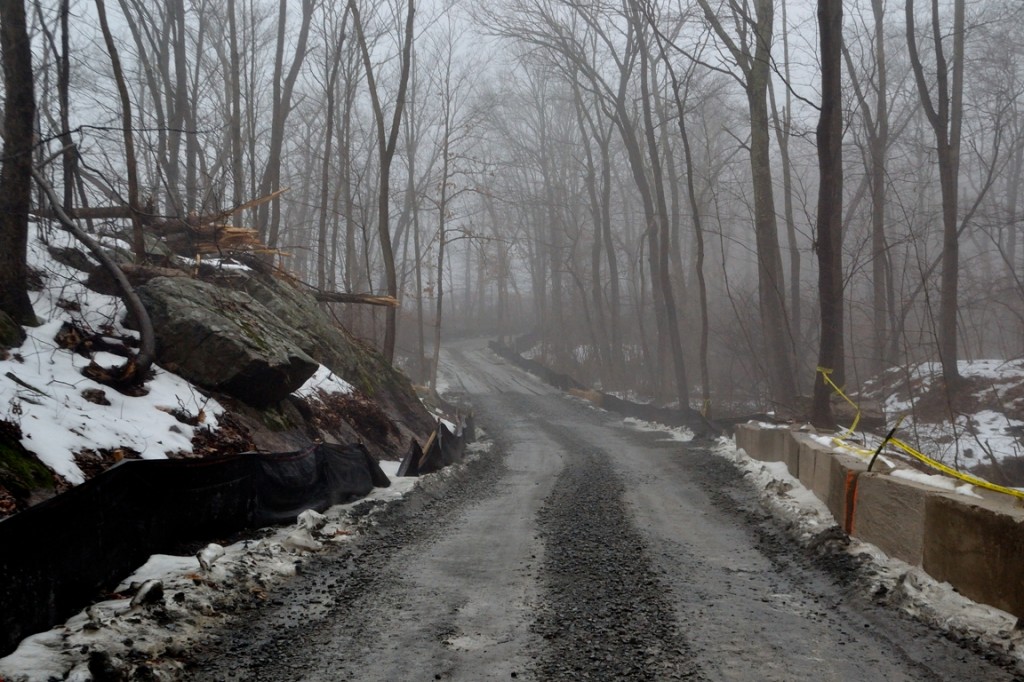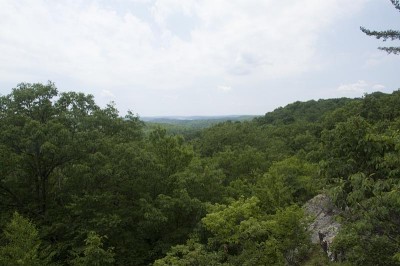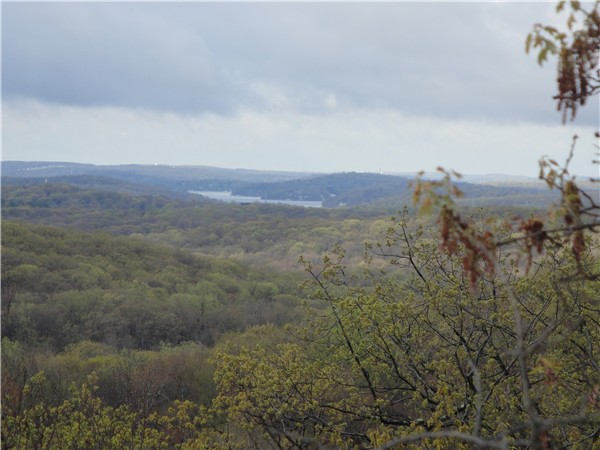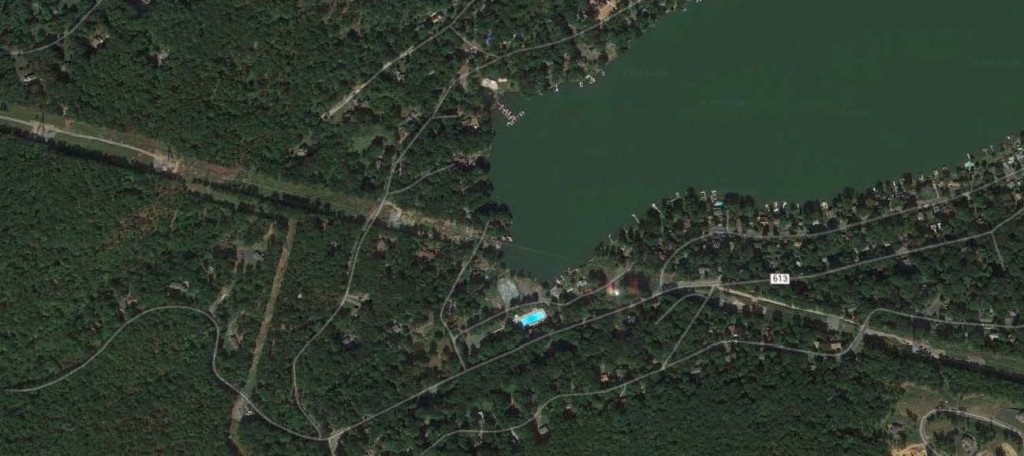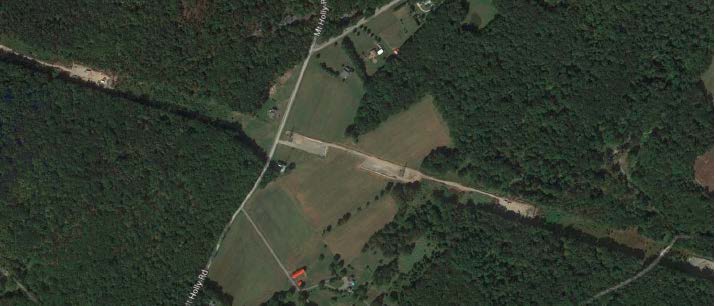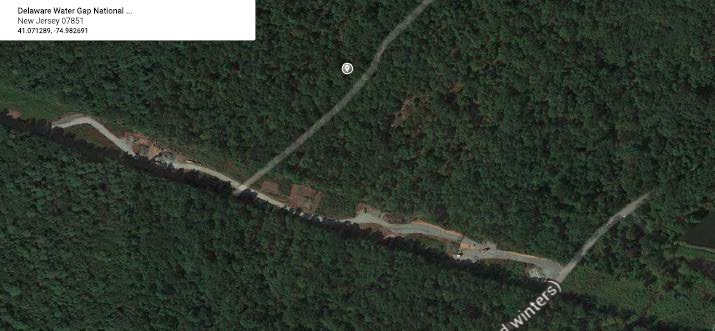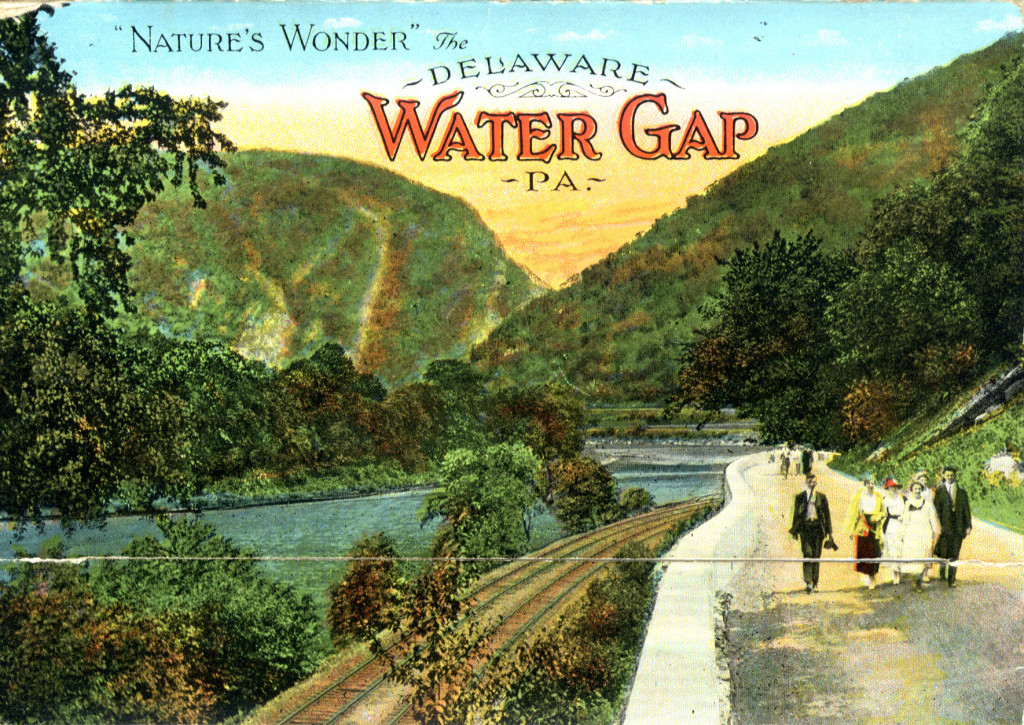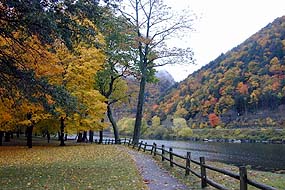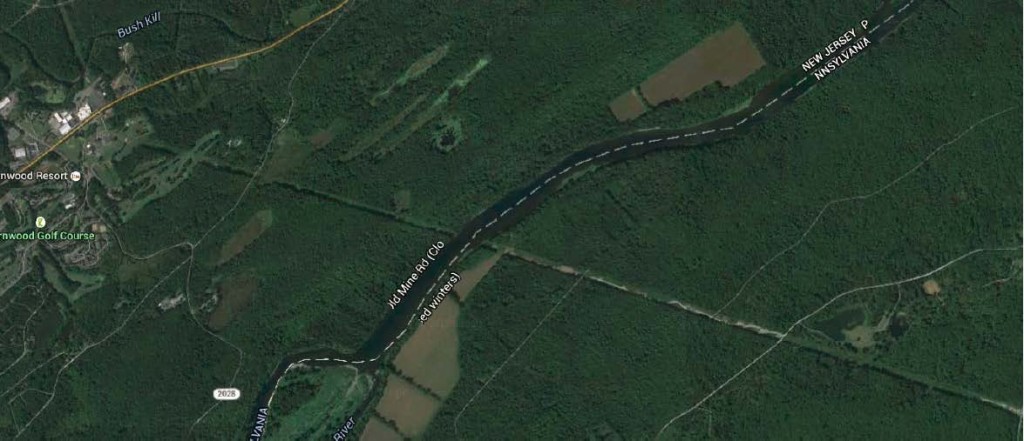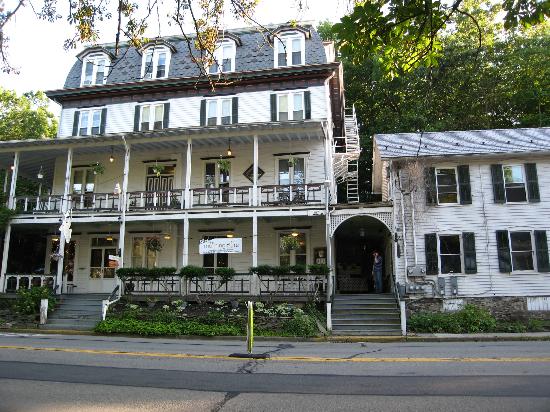Google Earth & Susquehanna-Roseland Xmsn
February 21st, 2015
New Jersey gets a bad rap, people here in the Midwest have no clue. People think of New Jersey, and they think of Newark (which has its good points, I really enjoyed officing there during the Susquehanna-Roseland hearing) which is a mess, vacant buildings all over the place, TALL vacant buildings…
 And that’s where the New Jersey Board of Public Utilities is, rolling a cart full of boxes back and forth from the R.Treat (right) to the BPU (big black glass smudged building under “Aug 2012”) in the snow was a joy:
And that’s where the New Jersey Board of Public Utilities is, rolling a cart full of boxes back and forth from the R.Treat (right) to the BPU (big black glass smudged building under “Aug 2012”) in the snow was a joy:
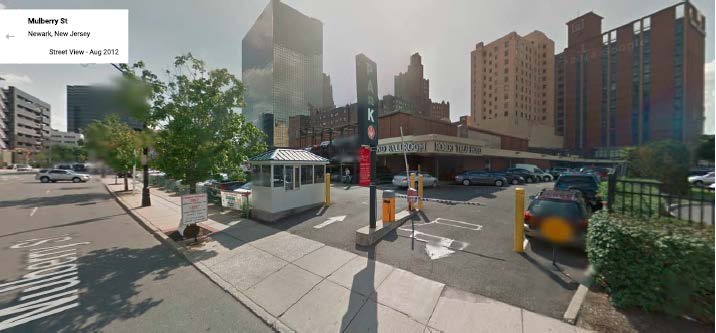 Anyway, there’s more to New Jersey than that. New Jersey where the Susquehanna-Roseland transmission line crossed is B-E-A-U-T-I-F-U-L. It’s a lot like northern Minnesota, granite and pine trees, stunning. Turns out my mother spent time there in the Army, and afterwards she worked at the Franklin Hospital, I think owned by the Franklin nickle mine.
Anyway, there’s more to New Jersey than that. New Jersey where the Susquehanna-Roseland transmission line crossed is B-E-A-U-T-I-F-U-L. It’s a lot like northern Minnesota, granite and pine trees, stunning. Turns out my mother spent time there in the Army, and afterwards she worked at the Franklin Hospital, I think owned by the Franklin nickle mine.
Google Earth maps are now showing the summer’s construction of the Susquehanna-Roseland transmission project, and… OH… MY… DOG…
Here are photos from Stop the Lines in 2013 of new access roads through the Mahlon Dickerson Reservation, Lake Hopatcong, NJ to build this monstrosity:
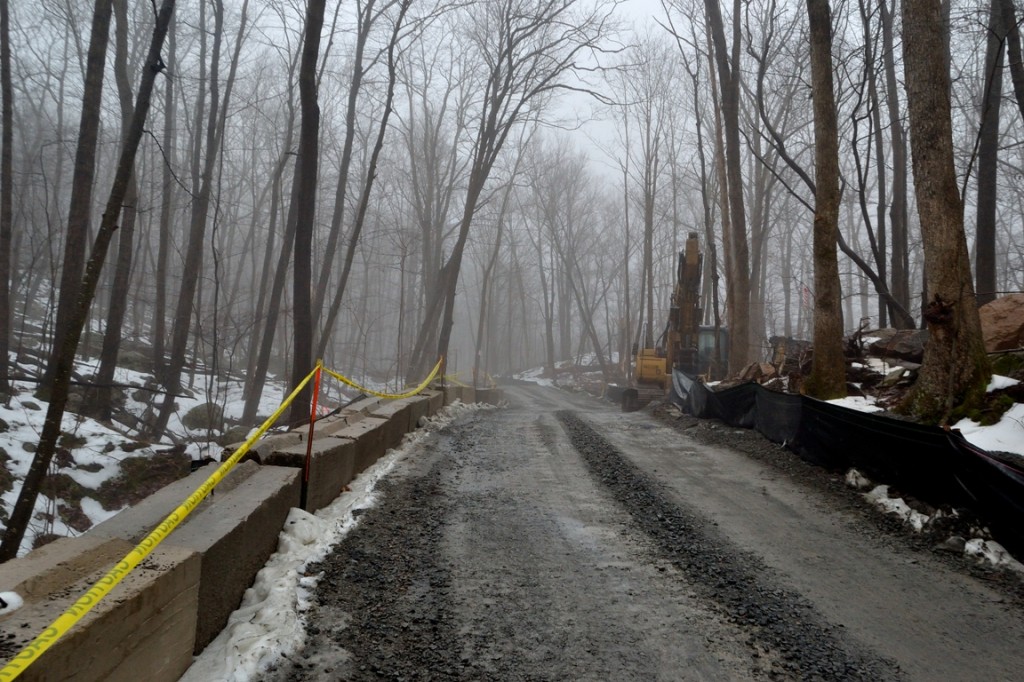 And just google that park for another perspective:
And just google that park for another perspective:
And the view from Headley’s Overlook and Lake Hopatcong:
Here’s Lake Mohawk, another example of bizarre transmission routing:
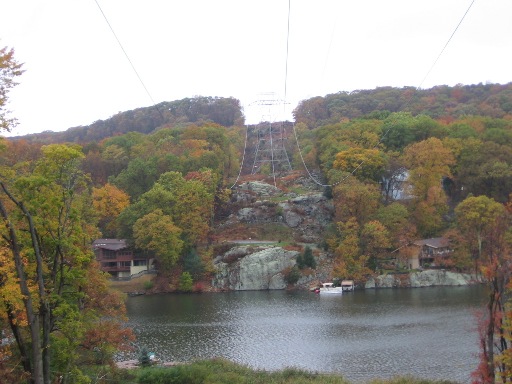 And at the heart of Stop The Lines resistence:
And at the heart of Stop The Lines resistence:
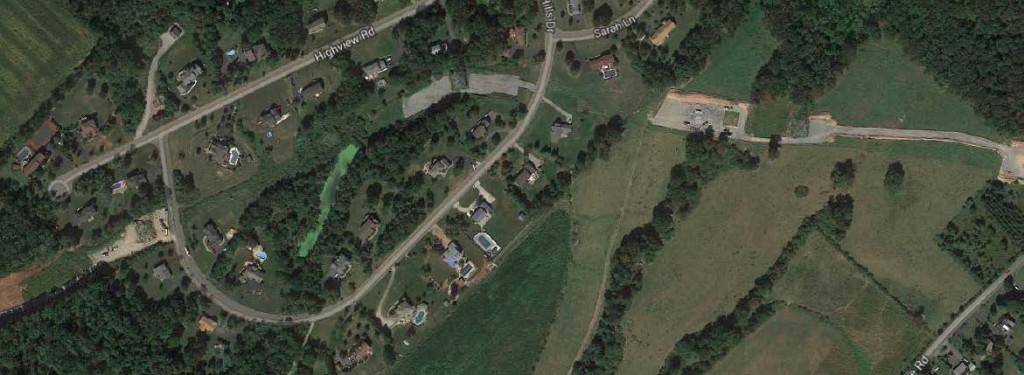 How’s that for a depressing photo? That’s Highview in Newton, NJ, and that’s a 500 kV AC line, TRIPLE BUNDLED (it originally was QUAD bundled, but that was over-reach beyond belief, and hey dropped it), HUGE capacity line, HUGE. Oh, and that’s the same configuration as the GNTL line. AAAAAAAAAAAAAAAAAAAAAAAGH! Look how close it is, and if ice coated lines and towers meet high wind, what happens if these crumple like others we’ve seen?
How’s that for a depressing photo? That’s Highview in Newton, NJ, and that’s a 500 kV AC line, TRIPLE BUNDLED (it originally was QUAD bundled, but that was over-reach beyond belief, and hey dropped it), HUGE capacity line, HUGE. Oh, and that’s the same configuration as the GNTL line. AAAAAAAAAAAAAAAAAAAAAAAGH! Look how close it is, and if ice coated lines and towers meet high wind, what happens if these crumple like others we’ve seen?
Check out these solar panels, house on Marksboro Road. The one just north has a roof full too, not just that garage!
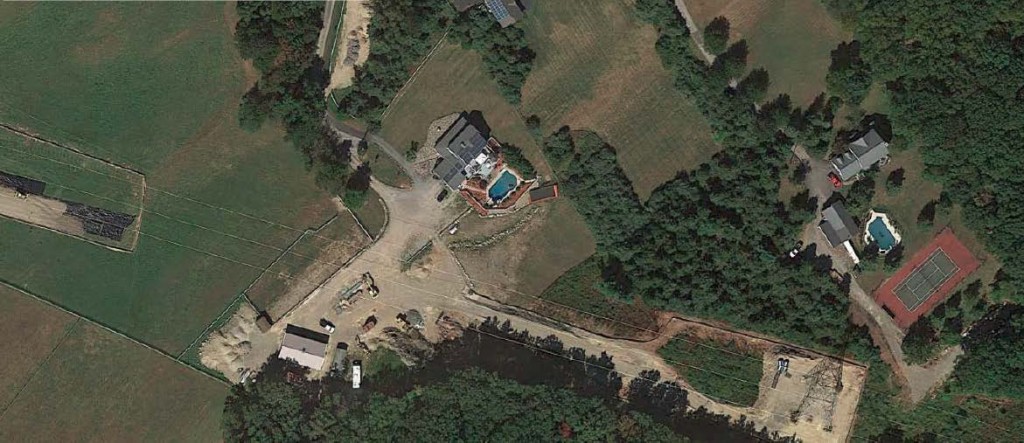 Here’s where it crosses Mt. Holly Rd. and you can see what the construction does to this field:
Here’s where it crosses Mt. Holly Rd. and you can see what the construction does to this field:
Here’s a view of the Picatinny Arsenal, thanks to Stop the Lines, and the tower is 215′ tall, the transmission towers through here will be ~25 feet shorter than this:
And yes, this is the transmission line that goes over the Delaware Water Gap and the Appalachian Trail! Here’s on the eastern side, NJ side, of the Delaware Water Gap:
DOH! The Delaware Water Gap is one of the country’s few Wild and Scenic Rivers (like our own St. Croix River):
Just the place for transmission! Enough… transmission sucks.
One of the perks of the job and being in the neighborhood was that I got to hear Phil Woods at the Deer Head Inn, he lives right around the corner. That must have been 2009, maybe 2010. His relatives on the Charlie Parker side came in from the east, place was packed, and as Ed Berger would say, “way outside.”
From NISLAPP – Green Electricity or Green Money?
November 4th, 2014
Released yesterday by National Institute for Science, Law, and Public Policy (NISLAPP) (never heard of it before, need to do some checking):
Green Electricity or Green Money?
Why is this a question? We know it’s a problem. But this report focuses on things like “Smart Meters” and doesn’t dig into the the even worse toadying for coal gasification and other harebrained promotional schemes of these orgs.
Here in Minnesota, the money goes to Minnesota Center for Environmental Advocacy, Fresh Energy f/k/a ME3, Izaak Walton League and its former program now independent 501(c)(3) Wind on the Wires (conveniently separate since just after election, when Bill Grant was appointed Deputy Commissioner of Commerce in charge of all things energy)(oh, and Nancy Lange appointed to Public Utilities Commission). And then there’s RE-AMP. There’s so much money flying around for promotion of transmission and coal gasification.
Bill Clinton toadying for transmission
WOW’s devil we know… ummm… WOW!!!
Walton’s Bill Grant – Deputy Commissioner of Energy?
Wind up to ELPC Transmission Strategy Meeting
AAAAAAAAAAAAARGH… back to work…
Xcel demand down, down, down
September 28th, 2014
I’ve been saying this for so many years, that electric demand is down, down, down, and instead, Xcel Energy (and all the others) have been saying it’s going UP, UP, UP (even though Mikey Bull said years ago that they wouldn’t need power for a while), and they’re applying for and getting Certificates of Need for all these permits for utility infrastructure that are obviously designed to market and sell the surplus, and the Public Utilities pretends to be oblivious (I say “pretends” because I cannot believe they’re that unaware and uninformed.).
This is a must read:
Here’s the short version from Xcel:
2024 is expected to be about what it was back in 2007, the industry peak year. DOH! But note this — there’s a “small capacity surplus in 2016.” DOH!
And given the surplus which we’ve known has been present and looming larger, that’s why they then ask for withdrawal of the Certificate of Need for the Prairie Island uprate because it isn’t needed (and really, that was just what, 80 MW or so? Or 80 MW x 2 reactors, 160 MW?). If they don’t need that small uprate, why on earth would they need so much more?
But what do I know…
Hollydale Transmission Line was clearly not needed, and they withdrew that application…
CapX 2020 transmission was based on a 2.49% annual increase in demand, and for Hampton-La Crosse in part supposedly based on Rochester and La Crosse demand numbers, yeah right, we know better, but that was their party line. Again, DOH, it didn’t add up to needing a big honkin’ 345 kV transmission line stretching from the coal plants in the Dakotas to Madison and further east, but who cares, let’s just build it…
ITC MN/IA 345 kV line — the state said the 161 kV should be sufficient to address transmission deficiencies in the area, but noooooo, DOH, that wouldn’t address the “need” for bulk power transfer (the real desire for the line).
Here’s a bigger picture of the bottom line (I’m accepting this as a more accurate depiction, not necessarily the TRUTH, but close enough for electricity), keeping in mind that these are PROJECTIONS, and that they’re adding a “Coincident Peak adjustment” which should be included in the “peak” calculations):
Notice the only slight reduction in coal capacity, just 19 MW, nuclear stays the same, a 320 MW decrease in gas, a 128 MW reduction in Wind, Hydro, Biomass, which I hope includes garbage burners and the Benson turkey shit plant , slight increase in solar of 18 MW, and Load Management also a slight increase of only 80 MW. This is Xcel Energy with its business as usual plan, which has to go. We can do it different, and now is the time.
Will someone explain why we paid so much to uprate Monticello, and paid to rebuild Sherco 3?
From the archives:
500+ give LS Power a piece of their mind
October 20th, 2009
2012 NERC Long Term Reliability Assessment
May 7th, 2013
PJM Demand is DOWN!
November 15th, 2012
Transmission? It’s NOT needed!!!
October 18th, 2012
Xcel shelves projects, admitting demand is down
December 3rd, 2011
Hollydale at the PUC tomorrow!
April 9th, 2014
Xcel’s request for withdrawal of its Hollydale Transmission Project Certificate of Need and Route Permit Application is before the Minnesota Public Utilities Commission tomorrow. We’re 4th on the agenda. Come on down, or watch it live!
Live Webcast
And look how a decision came down in Chino, California! There was a transmission line through the community for a long, long time, and it was “inactive” for a long, long time. Then one day, the utility started taking down the towers that weren’t being used, and stuck new bigger ones in their place. Thankfully, the story didn’t end there — they had to take the poles down and underground that transmission line:

Here’s the Chino Hills group’s website:
What does Obama’s Xmsn push mean?
October 10th, 2011
Aside from unprecedented corporate toadyism? Bowing to corporate greed at public expense? Methinks it means that the feds are stomping on states’ rights, and the states will fiercely fight to preserve their authority. Despite assurances by DOE’s Lauren Azar that they won’t be doing anything they already can’t do, I’m beyond skeptical.
The feds will have one big fight on their hands, a la the fight about states’ rights, whether for consultation on NEITC transmission or their right to deny transmission permits under the NIETC regs:
NIETC designation of corridors tossed out by 9th Circuit Court!!
Denial is NOT withholding… Piedmont v. FERC
Obama’s transmission push is ostensibly based on a Memorandum of Understanding that was signed by federal agencies, note that it is about “federal lands.”
CLICK HERE for the page that claims they’ll “expanding the scope of activity beyond federal lands.” How long before they change that sentence?!?!
For lots of info about this from a more easterly perspective check here:
Here’s what it could mean in practice – a $60 million pay-out to allow the line to go through:
Obama Administration Draws Criticism For Fast-Tracking Transmission Line Project Through National Park Units
Submitted by Kurt Repanshek on October 10, 2011 – 1:41am
A decision by the Obama Administration to fast-track seven power transmission line projects, including one through several units of the National Park System, has drawn condemnation from conservation groups.
Interior Secretary Ken Salazar says the fast-tracking shows the administration’s commitment to developing “the kind of critical infrastructure we should be working together to advance in order to create jobs and move our nation toward energy independence.”
But the secretary seems tone-deaf to groups that oppose the transmission project that would run across the Appalachian National Scenic Trail and through the Delaware Water Gap National Recreation Area and the Middle Delaware National Scenic River.
“The Obama Administration has failed to protect three popular national park sites in New Jersey and Pennsylvania with today’s decision to include the controversial Susquehanna-Roseland power line project on its list of fast-tracked transmission projects,” said Bryan Faehner, the National Parks Conservation Association’s associate director for park uses.
“Susquehanna-Roseland proposes to build massive 200-foot towers and power lines across the Delaware Water Gap National Recreation Area, the Middle Delaware National Scenic River, and the Appalachian National Scenic Trail in New Jersey and Pennsylvania. Delaware Water Gap alone enjoys more than five million visitors annually – most of which come from nearby urban areas – seeking the park’s inspiring views and outstanding recreational opportunities,” he added.
“Building massive power lines across these parks will harm the very resources they were designated to protect. This development can only harm visitors’ experience to the parks and puts economic benefits to local communities at risk. Unlike other proposals mentioned on the administration’s list, the Susquehanna-Roseland power line proposal would not help bring renewable energy sources on-line. Instead, it would transmit electricity produced by dirty coal-fired power plants.”
Last month Delaware Water Gap officials announced that a new alternative developed by the applicants has been added to their environmental analysis of the project, alternative 2b. Alternative 2b would be built within the existing right-of-way of the applicants’ original proposal, alternative 2.
“Under alternative 2b, the applicants would not request any additional ROW. They have stated they can safely operate the new line within the existing ROW, which has some sections 100 feet in width,” the NRA officials said at the time. “Construction would still require additional clearing for access roads and other features.”
The administration’s announcement last week to fast-track the project also was criticized by Public Employees for Environmental Responsibility, which said the decision “is a move to bypass proper environmental review designed to protect one of the most scenic areas of the entire national park system.”
“We do not object to fast-tracking projects as long as political appointees follow the laws protecting parks and the environment–but that hasn’t happened here,” said PEER Executive Director Jeff Ruch in a press statement. “Using jobs as a pretext is misplaced. More jobs can be created by protecting parks than by trashing them.”
PEER contends that Secretary Salazar, National Park Service Director Jon Jarvis, and other Interior officials have met repeatedly with project proponents, PPL Electric Utilities of Allentown, Pennsylvania and Public Service Electric and Gas Company of Newark, New Jersey, and have already approved a route for a new power line that will cut across the Delaware Water Gap NRA and the Appalachian Trail.
As part of the deal, PEER said the draft EIS will not consider at least two alternatives that would lessen impacts to the park’s scenery but will include at least one alternative (2B) demanded by the companies that is untenable from a safety perspective. The secretary and the director have unofficially committed to the companies that the NPS will select Alternative 2, the alternative preferred by the companies but which is the most damaging to the resources and scenery of the parks, PEER argued. In return, the companies have reportedly agreed to pay $60 million for land acquisition and administration inside and near the NRA.
“This is not ‘fast track,’ it is a short circuit in which political appointees are putting their thumbs on the scale to skew the review process,” Mr. Ruch added. “It is one thing to select an alternative after the conclusion of the NEPA process, but is something else to decide on the alternative before public comment has even begun.”
© Copyright 2011 National Park Advocates, LLC.
